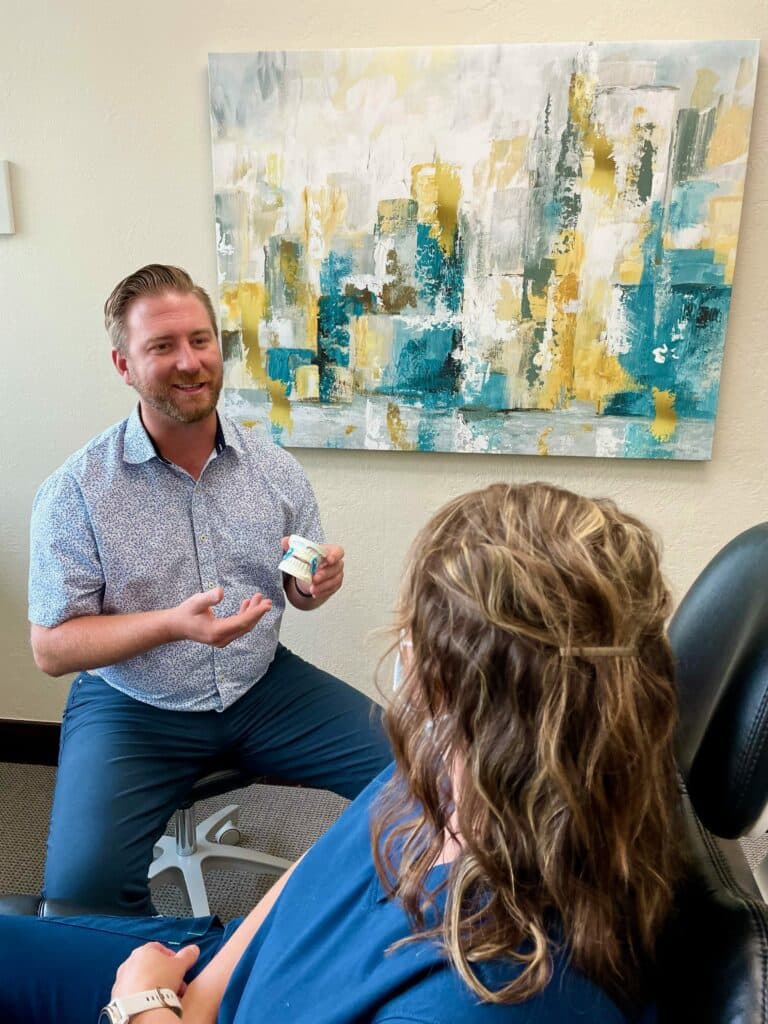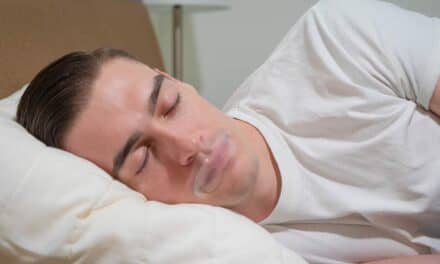The obstructive sleep apnea treatment oral appliance therapy gains more attention after one of the largest positive airway pressure device makers issued a recall.
By Lisa Spear
When millions of sleep apnea patients got news of a CPAP machine recall from one of the world’s biggest producers of the devices, Philips Respironics, many discontinued their therapy while also frantically looking for alternative treatments.
Some patients are now, for the first time, learning of oral appliance therapy for the treatment of obstructive sleep apnea. But due to many roadblocks, including obstacles imposed by private insurance companies and a lack of awareness among the general public, oral appliances have historically taken a backseat to CPAP in the United States. But should sleep physicians now consider prescribing non-positive airway pressure (PAP) therapies as first-line treatments?
“I think the answer is, clearly, yes for select therapies, especially for oral appliances,” says Dennis Hwang, MD, medical director of sleep medicine at Kaiser Permanente, during a recent Sleep Research Society video focus group.1
“And I think we are going to have to go to that point, especially with the Philips recall making a big dent in the availability of PAP devices perhaps for the next year and we are going to have to start rationing. We are going to have to proceed with emphasizing oral appliances for those patients who are considered to be good candidates,” he says.
[RELATED: Are CPAP Filters a Viable Interim Solution for the Philips Recall?]
Now some physicians have begun to look more seriously at how oral appliances can help meet the needs of their patients and have started to build robust partnerships with dentists, who typically fit the devices.
A dental sleep medicine practitioner in Texas, Kent Smith, DDS, says he is seeing a bump in referrals since the recall.
“There are some people who are on CPAP, who are on it because they thought that was their only choice,” says Smith. Now, some of his new patients are finding oral devices are more comfortable to wear than using CPAP. “It’s a silver lining.”
Multiple oral appliance companies are also seeing an increase in interest and some report more demand, including Oventus Medical, maker of the O2Vent Optima, a 3D-printed oral appliance made out of nylon.
The company says it has seen an influx of patients scheduling calls with Oventus customer care specialists. Another company, Advanced Brain Monitoring, reports new interest in its Apnea Guard device.
Smith says that while many patients are coming to his office in a panic, the recall could lead to some people finding a solution that may work better for them since, even before the recall, many patients struggled to adhere to their CPAP machines.
The oral appliance industry is already experiencing gains. The manufacturer Airway Management documented a 50% uptick in orders during the 30 days that followed the recall for the myTAP oral appliance, a device that is available for shipment directly to patient’s homes.
Unlike custom oral appliances that require impression making and fitting, the myTAP can be fitted in approximately 15 minutes with the guidance of a telemedicine appointment. Hardware at the front of the mouthpiece can be used to shift the jaw forward to prevent the soft tissues of the airway from collapsing and can be adjusted while inside the patient’s mouth.
“It is very easy for patients to self-titrate based on subjective measures, and then they can always do a follow-up sleep study,” says Charles Collins, CEO of Airway Management.
Airway Management has also begun talks with durable medical equipment suppliers to offer oral appliances, a development that could help bridge the gap in care.
Even before news emerged of the Philips recall, some companies ramped up their capacity for growth. SomnoMed and Apex Dental Sleep Lab each prepared for an increase in demand due to the novel coronavirus pandemic after reports emerged that CPAP might aerosolize the virus.
Prior to the recall, Oventus had already reworked its ordering and custom-manufacturing process to enable at-home impressions and fittings.
“The main thing sleep providers want right now is to know that their patients are going to get the treatment they need, without encountering a lot of obstacles in the way,” says Oventus CEO Chris Hart.
The Canada-based oral appliance manufacturer Panthera is also seeing a spike in interest with calls coming in directly from patients.
“This is unusual. Normally, patients don’t contact us as a manufacturer; they contact their dentist. But now we have some patients who are really digging into the internet to find an alternative solution,” says Béatrice Robichaud, Panthera co-founder and vice president of marketing and customer experience.
Dental sleep medicine practitioners are also experiencing a surge in interest. The Spencer Study Club for dentists is buzzing with conversations about how to best accommodate patients who are trying to find ways to cope, according to its founder Jamison Spencer, DMD, MS.
“I have been telling people that this could be a turning point, a tipping point, a watershed moment,” says Spencer, an Idaho-based dental sleep medicine practitioner. “Almost every day there is discussion among our group members about this.”

Still, obstacles remain. Oral appliance demand has not met its full potential due to ambiguity around insurance reimbursement, according to SomnoMed North America’s EVP of sales and marketing Matt Conlon.
“Until there’s reimbursement clarity from payors on allowances to switch to [oral appliance therapy] as an alternate therapy, we won’t see a big shift,” he says.
Questions remain about how private insurance companies will handle paying for oral appliances for people who are impacted by the recall, says Spencer.
“Is Blue Cross going to pay for a custom oral appliance, when on their record this person has a CPAP? And that, I think, is to be determined,” says Spencer.
Durable medical equipment providers, physicians, and patients haven’t been given clear guidance on the immediate situation, says Conlon, “so, it’s as if the gears have ground to a halt while they await stronger direction.”
Nevertheless, dentists are gearing up and ready, says Spencer. He has observed more interest from new patients coming in at his own practice. Another dental sleep medicine practitioner, Anjoo Ely, DDS, says she has seen a slight rise in new patients at her Michigan office in recent weeks, and could handle more.

“Some of the dental sleep medicine providers who prescribe [oral appliances] have reported that they are receiving more referrals from sleep physicians as a result of the recall. Others report that they have not (yet) noticed a big difference,” says Len Liptak, CEO of oral appliance company ProSomnus.
Many hope this can be a moment to educate the public about the benefits of oral appliances. “I think it is a good time to bring awareness to alternative treatment modalities,” says Ely.
Are Temporary Oral Appliances a Better Solution After the CPAP Recall?
In the world of oral appliance therapy, there are temporary oral appliances, which are designed for use during a limited period of time, and custom oral appliances, which are made according to the specificity of each person’s denture and built for years of use.
Temporary oral appliances are arguably gaining some of the most attention due to their relatively low cost and fast delivery.
Many temporary devices are “boil and bite,” which means patients heat them up in water and bite down on them to mold the device to their teeth. For example, the myTAP oral appliance works in this way and reverts back to its original shape when heated so that patients can refit the device as many times as needed.
Following the recall, the oral appliance company that makes myTAP as well as custom oral appliances, Airway Management, has seen the most interest in its temporary offerings, according to Collins, the company’s CEO.
In many cases, temporary oral appliances can be shipped directly to patients, who can be instructed on how to fit the devices themselves at home. The myTAP, for instance, constructed from a flexible thermoplastic material, is a device that is available for direct shipment to patients’ homes.
Depending on the brand, temporary oral appliances can cost roughly between $80 and $200, and unlike custom devices, temporaries are not routinely covered by insurance, according to the dentist Spencer.

While custom oral appliances are covered by medical insurance, payors can cause significant delays in delivering the devices to patients. For instance, a patient who is paying cash could get a custom device within two weeks, while another person who is relying on insurance could wait a few months for preauthorization, says Smith.
However, custom devices might be worth the wait since temporary oral appliances may be more uncomfortable for patients.
“When we think about temporaries, we think about it being easier or faster, but often it is not because I am giving you something that doesn’t fit you as well, and there tend to be issues. Maybe it is giving people gum issues or putting pressure on their teeth,” says Spencer.
On the other hand, he says, custom oral appliances are far more refined to an individual patient’s anatomy and based on a scan of their mouth. “The fit is infinitely better,” Spencer says.
His patients tend to stick to the custom oral appliance therapy more consistently because they are more comfortable wearing the device that is designed specifically for their mouth.
[Why Does It Take So Long to Start Patients on Oral Appliance Therapy?]
Dentist Smith also prefers custom over temporary devices. He likes the customizable menu available at ProSomnus. “They have different types of appliances for different patients,” he says.
For instance, if a patient has a large tongue, the devices can be designed to accommodate that by cutting down on material to add space. Other devices may work better for those missing teeth or who have temporomandibular joint dysfunction.
For a patient’s first experience with oral appliance therapy, it might be advantageous to go with a custom device, says Smith. He cautions that a negative experience with temporary oral appliances could deter patients from seeking a device that is custom-made for them.
“I am afraid that some may try an appliance from online and it is uncomfortable, it doesn’t work, and they might think that no other ball of wax will work, so they never make an attempt to go see a dentist, who does this for a living,” says Smith. “I have patients coming in and say, ‘Gosh, this hurt my jaw. This hurt my teeth. It was pressing on my gums.’”
That being said, some patients may greatly benefit from temporary devices and these can offer a quick solution to those who may otherwise go without sleep apnea treatment. No matter what approach they choose, Smith suggests it could be a new day for oral appliance therapy.
“This might help turn the tide on that subset of physicians who are not believers in appliances, so that’s what I am hoping happens,” says Smith. “Time will tell.”
Lisa Spear is associate editor of Sleep Review.
Top photo: Founding practitioner and chief medical officer of Sleep Dallas, Kent Smith, DDS, says he is seeing a bump in referrals to treat obstructive sleep apnea patients who have been impacted by the Philips Respironics CPAP recall. Photo courtesy of Sleep Dallas.
Reference
- Focus Group: Non-PAP Treatment Alternatives for Obstructive Sleep Apnea. Sleep Research Society. 29 Jul 2021. Available https://youtu.be/XiL7jTRP2mU.






